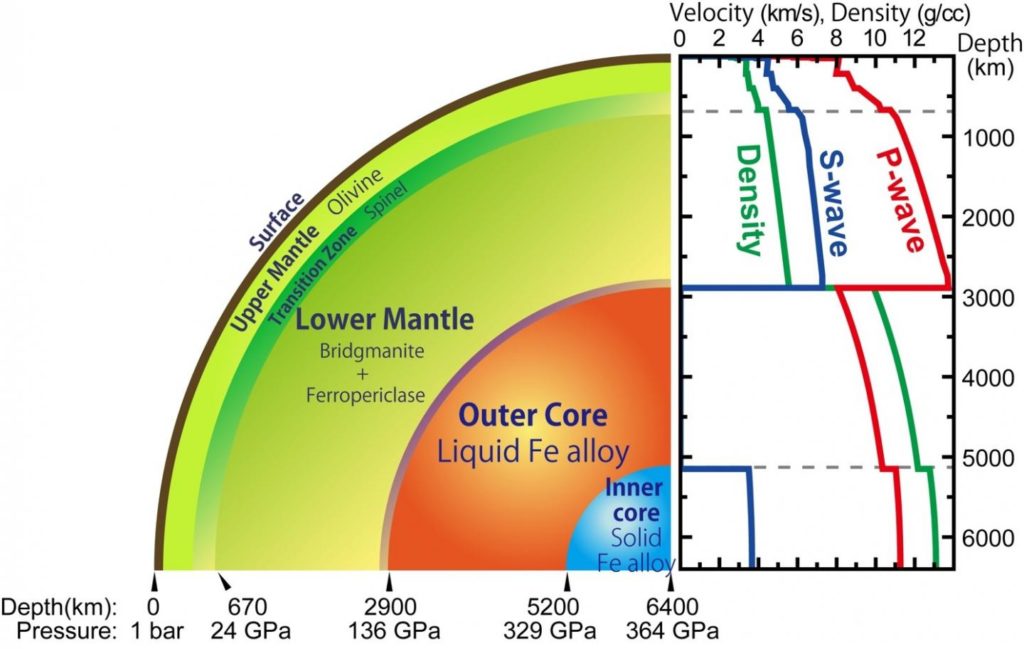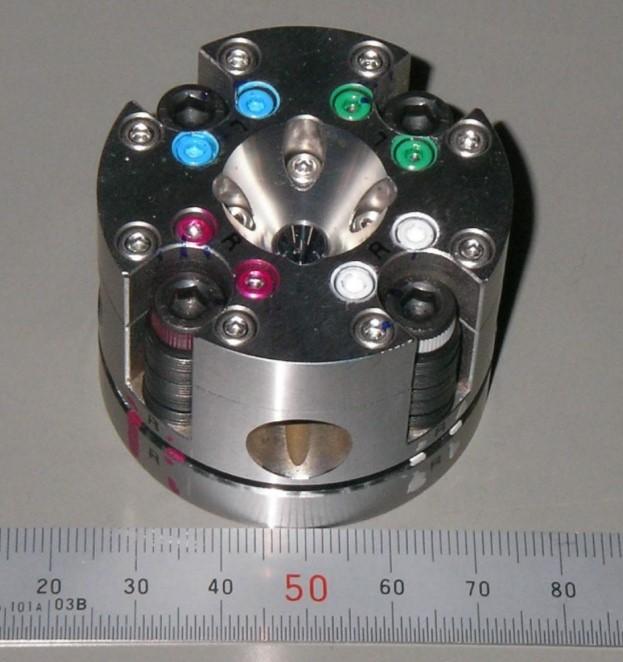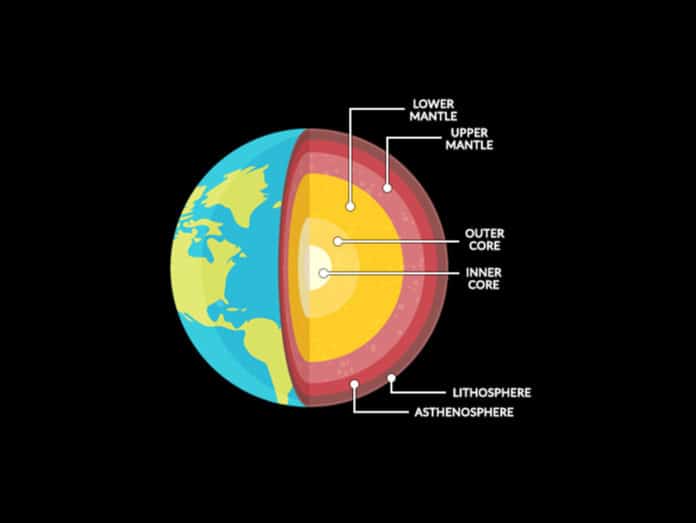After traveling through the mantle, you reach Earth’s core. The core is made mostly of the metals iron and nickel. It consists of two parts—a liquid outer core and a solid inner core. Together, the inner and outer core is 3,486 kilometers thick.
The main component of the outer core is iron, and its density is considerably lower than that of pure iron; it was thought to contain a large number of light elements like hydrogen and oxygen.
Distinguishing the type and amount of these light elements will take into consideration a superior comprehension of the origin of the Earth, explicitly the materials that made up the Earth and the environment at the core when it isolated from the mantle. In any case, this initially requires an exact estimation of the density of pure liquid iron at extreme pressure and temperature, like the molten core, so that densities can be compared.

With rising pressure, the melting point of iron also increases. This makes it difficult to examine the density of liquid iron under ultra-high pressure. Previous high-pressure liquid iron density measurements claimed that it was about 10% higher than the density of liquid iron under core conditions. Still, the shock compression experiments used were assumed to have a significant error.
A new study by the University of Tokyo and others from Japan and France used the large synchrotron radiation facility SPring-8 in Japan. Using the facility, scientists have precisely measured the density of liquid iron under conditions similar to those at Earth’s outer core: 1,000,000 atm and 4,000 degrees C. Accurate density measurements of liquid iron under such extreme conditions are vital for understanding the chemical makeup of our planet’s core.
The study improves upon the previous measurements by using the high-intensity X-ray at the SPring-8 facility to measure the X-ray diffraction of liquid iron under ultra-high pressures and high temperatures. It applies a novel analytical method to calculate the liquid density.
Scientists also measured the sound speed profile of the liquid under extreme conditions up to 450,000 atm. Data was collected at various temperatures and pressures, then combined with previous shock-wave data to calculate the density for conditions over the entire Earth’s core.

Right now, an ideal approach to assess the density of the Earth’s outer core is from seismic observations. Contrasting the outer core density with the exploratory estimations in this examination finds that pure iron is about 8% denser than that of the Earth’s outer core.
Oxygen, which was considered a significant impurity in the past, can’t clarify the density difference, recommending the presence of other light elements. This disclosure is a significant advance towards evaluating the chemical composition of the core.
Dr. Yoichi Nakajima, one of the main members of the research collaboration, said, “Worldwide, many attempts to measure the density, speed of sound, and structure of liquids under ultrahigh pressures using laser-heated diamond cells have been made for over 30 years, but none have been successful so far. We expect that the technological innovations achieved in this study will dramatically accelerate research on liquids under high pressures. Eventually, we believe that this will deepen our understanding of the liquid metallic core and magma deep within the Earth and other rocky planets.”
Journal Reference:
- Kuwayama, Y., Morard, G., Nakajima, Y., Hirose, K., Baron, A. Q. R., Kawaguchi, S. I., … Ohishi, Y. (2020). Equation of State of Liquid Iron under Extreme Conditions. Physical Review Letters, 124(16). DOI:10.1103/physrevlett.124.165701
